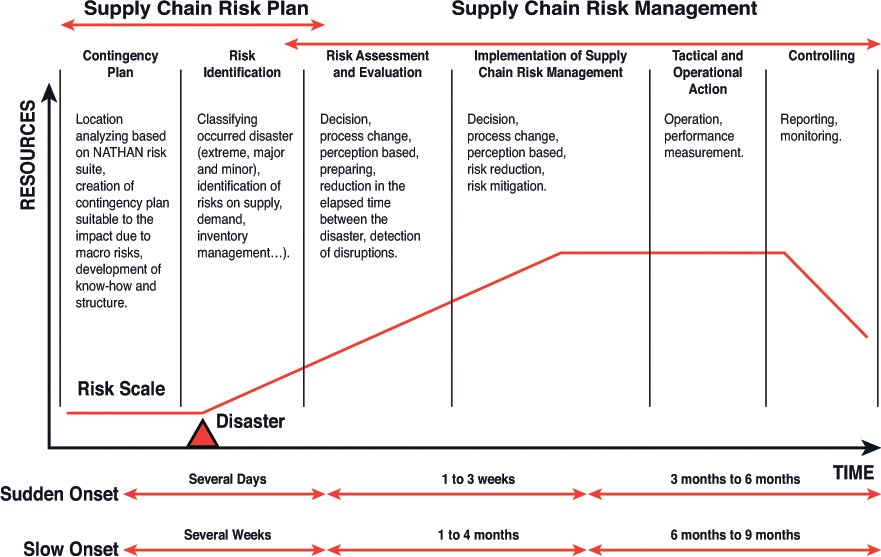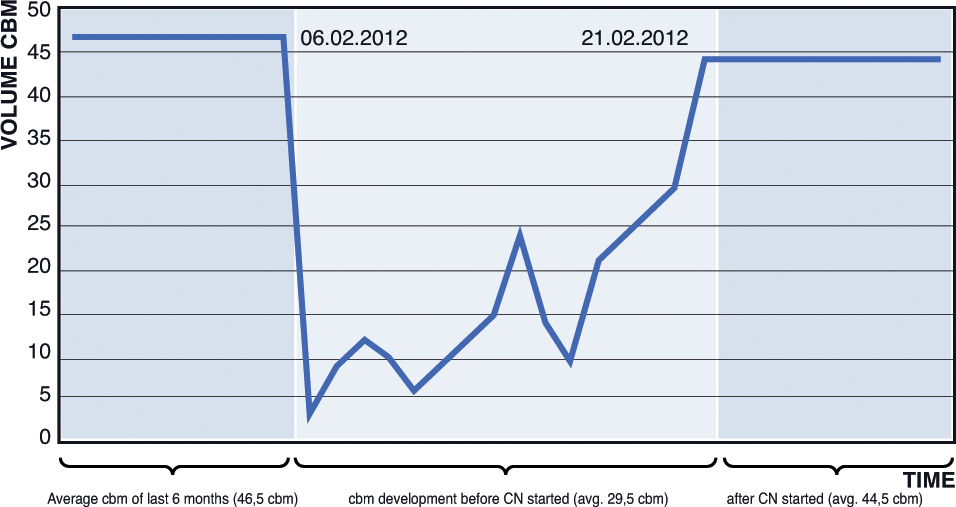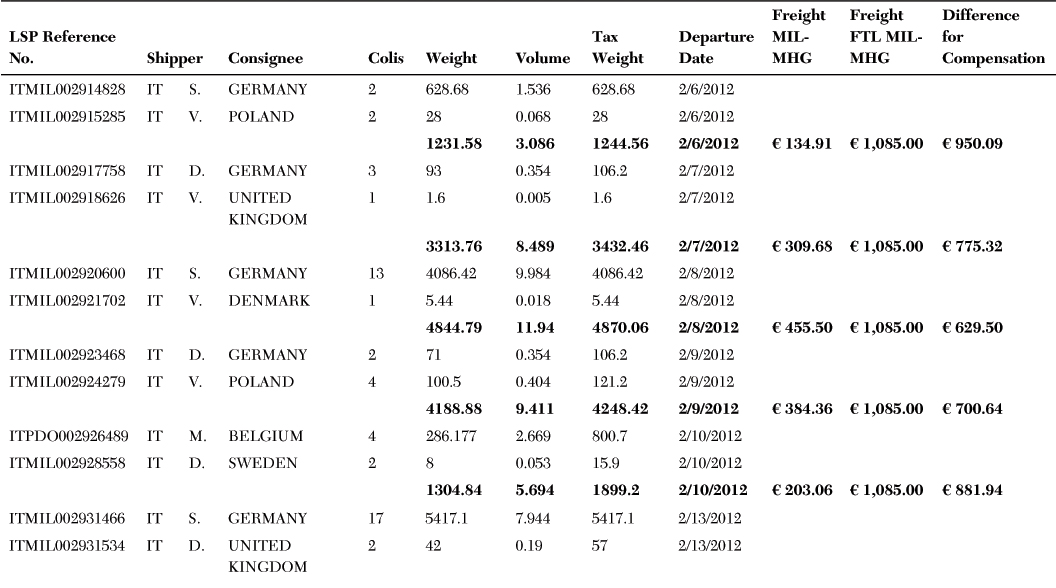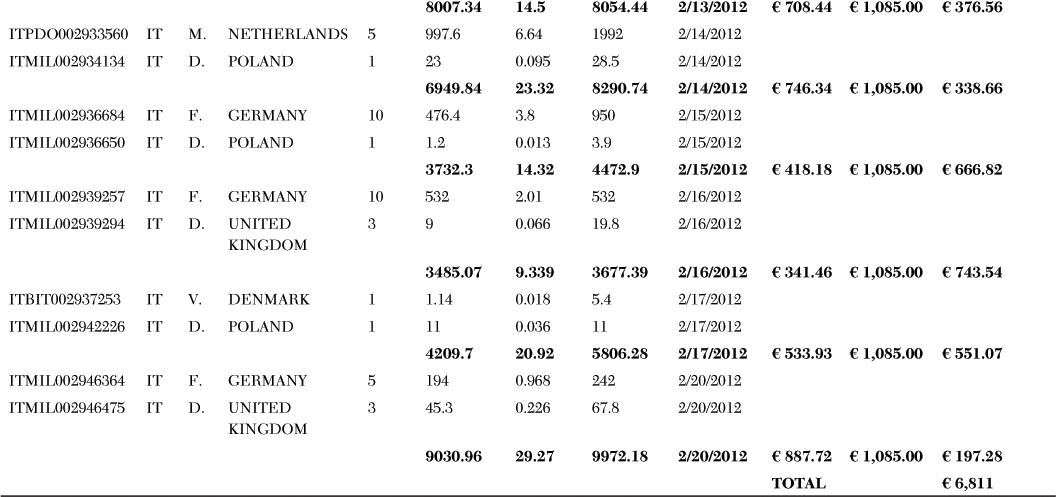Case 30. Supply Chain Risk Management for Macro Risks
† Institute for Logistics and Service Management (ild) at FOM University of Applied Sciences, Essen, Germany; [email protected]
‡ Institute for Logistics and Service Management (ild) at FOM University of Applied Sciences, Essen, Germany; [email protected]
Introduction
In recent years, international competition has pressured European companies to improve quality and reduce the time and costs of product development and manufacturing. Furthermore, the economic and financial crisis of 2009 led to an increased effort to outsource manufacturing activities and to find suppliers who can ensure production of products with high quality at lower costs (Kumar 2009). European, in particular German, companies outsource their activities to Asian and other Eastern European countries that provide inexpensive but skilled labor and offer enormous cost reductions. Furthermore, rapid technology development, contracting out, global markets, product dynamics, service complexity, reduced supplier bases, and modern inventory practices are all aspects behind the commonplace complex and interlinked business environment (Deleris and Erhun 2005; Glickman and White 2006).
The corporate strategy of utilizing a global supply chain is afflicted with risks such as linguistic and cultural deficits and customs regulations (Cho and Kang 2001; Schniederjans and Zuckweiler 2004), transportation delays, and logistics service differences (Cho and Kang 2001). All these types of risks have countermeasures that may increase costs but are typically effective in reducing such risks. On the other hand, macro risk factors including (1) natural disasters (floods, earthquakes, hurricanes, fires, and tornadoes), (2) man-made disasters (war and economic crisis), or (3) technical disasters (transport accidents, explosions, fire, gas leaks, and industrial accidents—see Exhibit 30-1) are significant and random events that are especially challenging to manage.
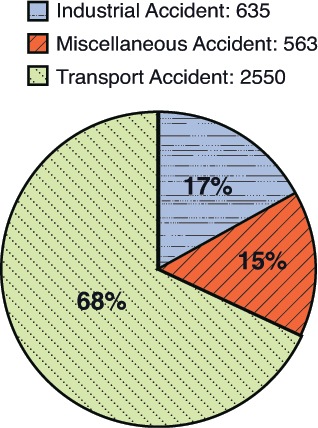
Source: Figure generated from data found at EM-Dat (2012)
Exhibit 30-1. Number of disasters worldwide.
Dramatic collapse of a supply chain due to macro risks argues to verify the strategic, tactical and operational levels of a supply chain and to address all efforts to manage in an efficient way. The three levels in detail are as follows (Kumar 2009):
• Strategic level: Is the supply chain aligned with the risk management objectives?
• Tactical level: Are all potential risks due to macro risk events well known? Do the supply chain managers have contingency plans in place, and are they prepared when these disasters occur?
• Operational level: Is the time known when the prepared contingency plan can be deployed? Are the users able to learn from the experience and to improve their responses to future events?
There are various perceptions in the literature on how to execute risk assessment, risk management and risk mitigation in a global supply chain, and these are common. Risk management should be a continuous and developing process that runs throughout the organization’s strategy and the implementation of that strategy (see Exhibit 30-2).

This material is reproduced with the permission of John Wiley & Sons, Inc.
Originally appeared in Manuj and Mentzer (2008), p. 137.
Exhibit 30-2. Five-step process for global supply chain risk management and mitigation
According to IRM/AIRMIC/ALARM (2002): “It [risk management] should address methodically all risks surrounding the organization’s activities past, present and in particular, future. It must be integrated into the culture of the organization with an effective policy and a program, led by the most senior management. It must translate the strategy into tactical and operational objectives, assigning responsibility throughout the organization with each manager and employee responsible for the management of risk as part of their job description. It supports accountability, performance measurement, and reward, thus promoting operational efficiency at all levels.”
Classification of Risks
Risk mitigation and control has to be classified in two groups: proactive and reactive, because macro risks differ and not all cause catastrophic damage. Because of the increasing number of natural, man-made or technical disasters, the global supply chain has to take measurement regarding how it can reduce vulnerability and build supply chain resilience. The risk factors can be classified in risk classes, which are presented in Table 30-1.
Table 30-1. Classification of Macro Risks as Well as Risk Factors
Every company has to verify the individual company structure, the supply network, the location of supply chain partners around the globe, and if the location of the supply chain partner is in a country that can be affected swiftly by macro risks. These have a high impact and influence company value as well as turnover in a supply chain. For example, in March 2011, Japan was affected by a tsunami and earthquake, and this caused a high degree of damage in many supply chains of the automotive industry. The supply chain network partners had to procure automotive parts from other suppliers or stop production. Such impacts can cause high costs for the company and threaten the labor market, in particular in the automotive industry.
Therefore the supply chain of different industries has to recognize that there are specific risk determinants where the supply chains have to establish an adapted contingency plan for macro risks. Classification of risk factors to macro risk events by showing the impact on the supply chain can be seen as a result and is helpful for strategic decision making by organizing and issuing a supply chain risk plan for building supply chain resilience.
General Supply Chain Resilience Model
Exhibit 30-3 presents a detailed conceptualization of a supply chain resilience model that considers macro risks. Ways to take action are case-dependent. For example, with a slow onset disaster such as a drought, management has more time to take action and to analyze their location, supplier relationships, contracts, processes, inventory, and demand management than when an industrial or transport accident occurs—in which case they have to act fast and hopefully have a more detailed contingency plan in place. Furthermore, not all risk factors shown in Table 1 are essential and concern macro risks. In summary, slow onset disasters require proactive supply chain risk management, while sudden onset disasters require more reactive supply chain risk management due to missing resources such as time, employees, and money.
European Case Study
The key actor is a global logistics service provider based in Europe with a turnover of 19.8 billion Euro and 95,000 employees worldwide in 2011. For many years, the logistics provider has cooperated with a Swiss company that is active within the electrical and power plant industry. As one type of cooperation, the logistics provider has introduced a daily transport round-trip from Italy to Germany. Based on a rate agreement, a 20-ton trailer picks up goods from two warehouses of the Swiss company near Rome (Italy) for further Europeanwide distribution. The transported goods from the two locations near Rome have to be trans-shipped at the logistics provider’s terminal in Milano (Italy) for forwarding to the terminal in Mannheim, Germany (central hub).
During the nights of February 4 and 5, 2012, a disaster occurred via a very unusual amount of snow falling and bringing down the very light roof construction of the Swiss company’s plant at one of the two origin locations near Rome. This caused a dramatic decrease of shipment volume for the logistics service provider. In particular, the truck from the two locations near Rome to Milano lost three quarters of its utilization, and the same volume was missing for the main haul carriage between Milano and Mannheim. Exhibit 30-4 shows the impact of the disaster.
On February 21, the Swiss company compensated for the missed volume by importing goods from China for distribution in Europe. But the packages of the goods that arrived from China into the Milano HUB (via Malpensa airport) did not have the same quality compared to ready-to-sell packed goods from the plant near Rome. The logistics service provider had to repackage the imported goods from China to prevent damage and to ensure the promised logistics and transport quality service to the Swiss company.
The disaster caused additional costs. The logistics service provider had to manage the following:
• The volume of shipped goods during the period before the disaster from the two locations near Rome to Milano was 40.2 m3 and from Milano to Mannheim was 46.5 m3 on average. From the time until the Chinese imports began, the volumes decreased and reached an average of only 13.7 m3 on the shuttle and 8.8 m3 on the prehaulage.
• Within the time of the Chinese imports into the Milano airport, the shipment volume was 44.5 m3 on average, a little below the normal shipment volume; whereas the volume on the prehaulage was still lower but costs had been covered by the transport costs that were allowed to be charged as per agreed standard rate from the origin plant in order to cover this underutilization and keep the service level steady.
Consequently, the imported goods volume from China did not leverage the gap of the two weeks without any (compensated or uncompensated volume from the collapsed factory). These shortages resulted in the non-utilization of trucks by using the agreed land tariff based on the contract between the Swiss company and logistics service provider. The missing goods volume compared to the average utilization of the shuttle between Milano and Mannheim on a daily basis had a freight rate total amount of 6,811 Euro. The appendix provides a detailed calculation of the determined gap for each individual transport.
Discussion Questions
1. What conclusions can be drawn from the supply chain resilience model (refer to Exhibit 30-3)?
2. What concept is best suited for logistics service providers to reduce the impact of macro risks?
3. What advantages and disadvantages result from the implementation of supply chain risk management systems?
4. For the plant collapse in Italy, can you think of any proactive contingency plans that either the logistics service provider or the Swiss company could have had in place that might have reduced the negative implications from the disaster?
References
Cho, J., Kang, J. (2001): “Benefits and challenges of global sourcing: perception of US Apparel retail firms,” International Marketing Review, Vol. 18, No. 5, pp. 542–561.
Deleris, L.A., Erhun, F. (2005): “Risk Management in Supply Networks Using Monte-Carlo Simulation,” Proceedings of the 2005 Winter Simulation Conference.
EM-DAT 2011: The International Disaster Database, retrieved www.emdat.net on 07.10.2012.
Glickmann, T., White, S. (2006): “Security, visibility and resilience: The key to mitigating supply chain vulnerabilities,” International Journal of Logistics Systems and Management, Vol. 2, No. 2, pp. 107–119.
IRM/AIRMIC/ALARM (2002): A Risk Management Standard, the Institute of Risk Management/Association of Local Authority Risk Managers/Association of Insurance and Risk Managers, London.
Kumar, S.S. (2009): “Risk Management in Supply Chains,” Advances in Management, Vol. 2, No. 11, pp. 36–39.
Manuj, I., Mentzer, J.T. (2008): “Global Supply Chain Risk Management,” Journal of Business Logistics, Vol. 29, No. 1, pp. 133–155.
Schniederjans, M.J., Zuckweiler, K.M. (2004): “A quantitative approach to the outsourcing-insourcing decision in an international context,” Management Decision, Vol. 42, No. 8, pp. 974–986.


